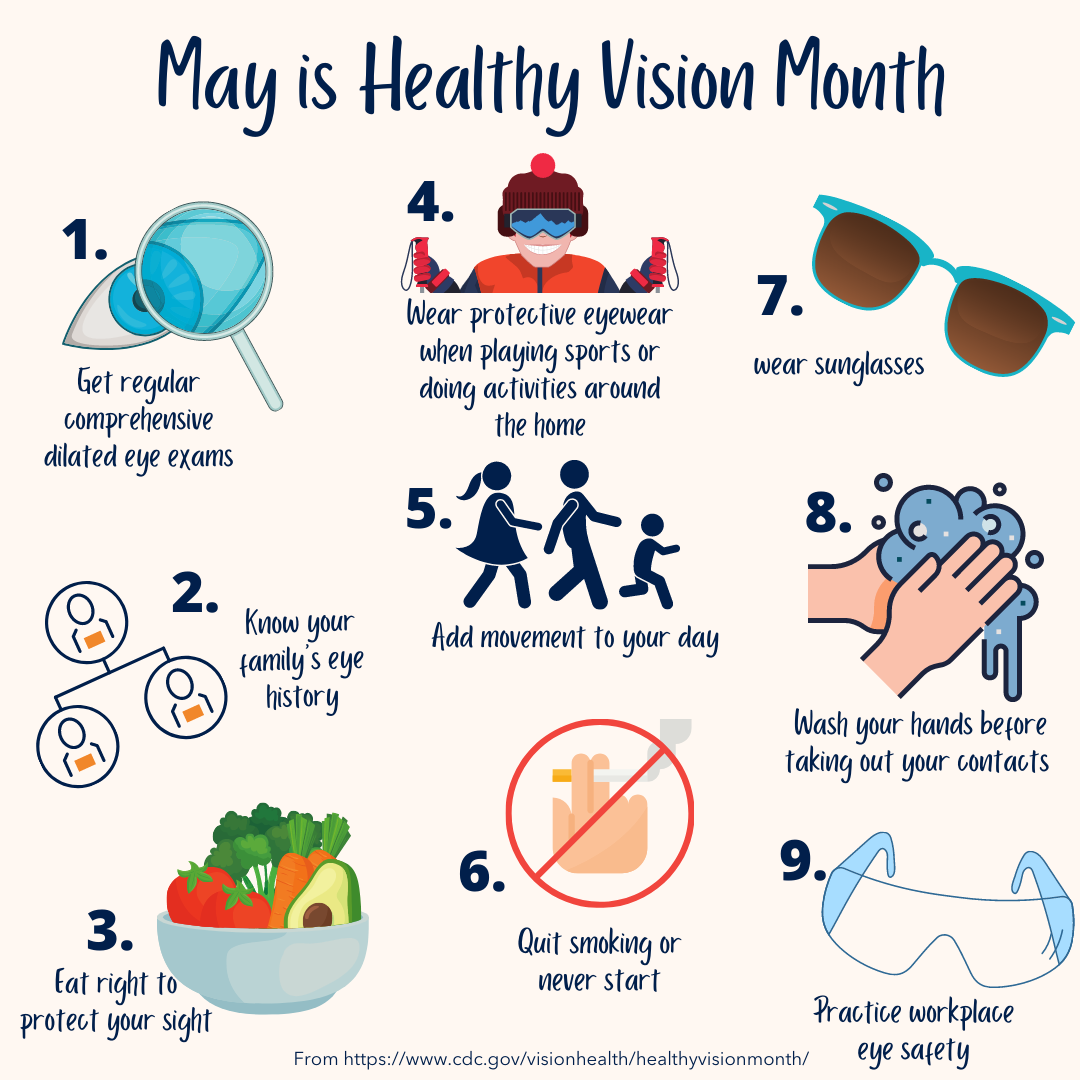The Centers for Disease Control and Prevention (CDC) highlights May as Healthy Vision Month. Their Vision Health Initiative (VHI) includes information on the basics of vision and eye health, prevention and risk management, state and community partnerships, vision health data, and resources and publications.
Although BostonSight specializes in the treatment of diseased or damaged corneas and dry eyes, taking care of your vision is imperative from the start.
According to the CDC, “people with vision problems are more likely than those with good vision to have diabetes, poor hearing, heart problems, high blood pressure, lower back pain and strokes, as well as have increased risk for falls, injury and depression.”
Some fast facts from the CDC:
- Vision loss ranks among the top ten causes of disability in the United States.
- More than 3.4 million Americans 40 years and older are blind (having a visual acuity of 20/200 or less or a visual field on 20 degrees or less) or visually impaired (having a visual acuity of 20/40 or less).
- Vision loss significantly impacts quality of life. Decreased ability to see often leads to the inability to drive, read, keep accounts, and travel in unfamiliar places. The cost of vision loss, including direct costs and lost productivity, is estimated to exceed $35 billion (Rein, Zhang, Wirth, et al., 2006)
Source: https://www.cdc.gov/visionhealth/basic_information/vision_loss.htm
Nine ways you can help protect your vision today.
- Get regular comprehensive dilated eye exams.
- Know your family’s eye health history. It’s important to know if anyone has been diagnosed with an eye disease or condition, since some are hereditary.
- Eat right to protect your sight: In particular, eat plenty of dark leafy greens such as spinach, kale, or collard greens, and fish that is high in omega-3 fatty acids such as salmon, albacore tuna, trout, and halibut.
- Get physical activity
- Wear protective eyewear when playing sports or doing activities around the home, such as painting, yard work, and home repairs.
- Quit smoking, or don’t smoke at all.
- Wear sunglasses that block 99 percent-100 percent of ultraviolet A (UVA) and ultraviolet B (UVB) radiation.
- Wash your hands before taking out your contacts and cleanse your contact lenses properly to avoid infection.
- Practice workplace eye safety.
